The Transamerica Pyramid in San Francisco
On a recent West Coast trip I decided to take a detour from all the world-ranked, private, and resort courses I typically play, to visit the city-owned Lincoln Park Golf Course in San Francisco. The course is within the city limits, located (appropriately) next to the Lands End section of Golden Gate National Park. This end-of-the-continent location commands rich views of the Golden Gate Bridge and Marin Headlands. Few parts of the world are blessed with a rocky and windswept shoreline sitting high above the water, creating vistas as dramatic as the ones here. I grew up playing golf on municipal courses and did not have the foresight to take lessons when I began. Mine is a homegrown swing honed on ill kept courses, so this round was a throwback to my early golfing days.
My apologies for the subdued nature of the pictures accompanying this post. The day was gray and overcast and I had my phone and not my camera with me. I arrived at the course on a Friday morning at 8:30 a.m., and to my surprise there was no one there and I went straight out as a single. A quick glance at the scorecard and my brain made a mental note that I was going low because the course is so short.
The conditioning at Lincoln Park is as you would expect at a busy city-owned course. The grass is interspersed with a liberal amount of clover and there are bare patches and swaths of mud. This is not a criticism of the course superintendent or maintenance crew: they work within the confines of what the city provides and golf is almost never a top priority within overall budget spending. The course was in good playable shape on the day of my visit, even if the turf was a little squishy and the greens a touch spongy.
Lincoln Park takes its name from our 16th president and the course has a minimal number of bunkers. Its defenses are the narrow corridors you play through, the steeply sloping terrain, and tiny greens. The other defense against low scoring are trees overhanging fairways and greens. I suspect the trees are long overdue of trimming, or, this is an intentional design feature to make the course more challenging. The typical clammy and damp air along the ocean also makes club selection tricky since the ball doesn't travel as far.
To state the blindingly obvious, San Francisco is a city of steep hills. Lincoln Park is thus a golf course of steep hills, uneven lies being the order of the day. I was surprised the handful of times during my round that I didn’t have a ball above or below my feet. The good news is that all the greens are essentially flat, which is appreciated, because after the challenges presented by the sidehill, downhill and uphill lies it is nice to have putting surfaces that aren’t an additional obstacle. In an unusual quirk, all the greens are the same shape: round. No kidney shaped greens, no square or rectangular putting surfaces, no figure eights or hunchbacks, swales or punch bowls. Just flat and round. The other thing they have in common is that they are all below average in size. Lincoln Park is the antithesis of a course that rewards length. Hitting driver doesn't really yield results here. The course rewards accuracy and the ability to shape shots: a genuine shot maker's delight.
The starting hole sets the tone for the day: a 316-yard par four that plays closer to 350 yards because of the steep gradient of the hill you must navigate. The hill is in some ways the easy part of the challenge to overcome. An overhanging tree down the fairway on the left side comes into play off the tee, and an overhanging tree on the right side comes into play on your approach to the small, round green. The entire hole plays along the side of an incline, which runs from the top of the property down to the Pacific. Welcome to Lincoln Park.
The circular, small 2nd green at Lincoln Park
The second hole is a 257-yard par four dogleg right that sweeps
along the same hill as the first. Anything left of center will inevitably spring down the
hill, creating a troubling angle from which to approach the elevated (and you
guessed it) round green, that is protected by an overhanging tree. It's somewhat cruel that a shank lie is presented to the golfer this early in the round, creating just enough doubt for the ensuing holes to put you off balance.
Lincoln Park was designed early in the twentieth century on a tight piece of land, clinging to only 100 acres, thus, it plays a scant 5,146 yards from the tips. I know, I can hear alarm bells starting to go off in your head. Hum . . . seems like somewhat of a gimmicky course. Kinda’ short isn’t it? Can something this short be taken seriously? Well, three of the dumbest assumptions you can make in life are: 1) judging a book by its cover; 2) judging a person by their looks; and 3) judging a golf course by its length. Although only 5,146 yards, the course is a par of 68. Terrain matters in golf, and when you have to hit so many shots into steep uphills, judging a course by yardage alone is a mistake. Also, there is only one par five and several of the par threes play over 230 yards, sometimes with greens well above the elevation of the teeing ground.
The first two holes are the appetizer and things go up tempo in a hurry after the openers; the experience elevates significantly from here. Walking off the green, the
unsuspecting golfer navigates a steeply graded walking path. Through the trees, the observant golfer might spy a glimpse of the eastern tower of the Golden Gate Bridge rising majestically out of the water as the walk proceeds around the beautiful Beaux
Arts-style Legion of Honor (an art museum) and then across the El Camino Del Mar.
The Marin Headlands covered in a typical enchanting shroud of fog as seen on the walk between the 2nd and 3rd holes at Lincoln Park
California is blessed with the prettiest walk between holes
of any course in the world: namely, between
the 15th and 16th at Cypress Point, located 130 miles south of Lincoln Park. Other great walks in
the game are in Tasmania (Barnbougle Dunes 4th to 5th), Nova Scotia (Highlands Links 12th to 13th)
and Georgia (the walk over Hogan’s Bridge at Augusta). The walk from the 2nd
green to the 3rd tee here is worthy of inclusion among this list of the best. As you walk around the museum and
across the road the scene fully unfolds. Each step forward reveals another part of the panorama until eventually you see the full 1.2 mile suspension bridge in all her majesty. This is unquestionably one of the most beautiful views in the world: the Golden Gate Bridge guarding the entrance to San Francisco Harbor with the Marin Headlands across the
water.
The Golden Gate Bridge as seen on the walk from the 2nd green to the third tee, one of the prettiest views in the world of golf
The Golden Gate Bridge is painted orange so that it is easy for mariners to see in the fog. Its towers soar 746 feet above the ocean floor, about the height of a 60-story building, and they are a sight to behold. I had the representative Bay Area summer conditions when I played: cool, clammy,
overcast, and foggy. Four holes on the course (the 3rd, 4th, 5th, and 17th) play on the western side of the El Camino Del Mar and they are the ones that offer the most dramatic views of one of the prettiest harbor entrances in the world.
The third hole is a relatively easy 156-yard par three that
plays uphill. I say relatively because it isn’t that hard if you stay away from
the tree that overhangs the left side of the green.
The third green, set in a murky and dark location near the Pacific
The fourth hole plays 321 yards down a hill and it has the requisite cypress tree sitting over the circular green. It is a good thing that Lincoln Park does not have many sand traps, since they really aren’t needed given the steep terrain and narrowness of the holes.
The 6th tee is situated immediately right of the Legion of Honor
Would you be surprised to learn that the 359-yard par four
fifth hole also has a tree overhanging the green? What makes this hole
challenging is a different hill that sweeps down to the Pacific from the top of
the property. The Legion of Honor is built at the crest of the
property and all the fall lines emanate from it. Five plays sideways
across the slanting incline that runs down from right to left. Keeping its form
consistent throughout the round, the fifth green is circular as well in case you were wondering.
For those Hitchcock fans among us, the Legion of Honor is one of the locations used in the film Vertigo, as Jimmy Stewart (Scottie) follows Kim Novak (Madeleine) around through the city while she is in a trance.
The sixth green sits over the rise of a hill and is blind from the left side of the fairway
The sixth hole plays back across the road and behind the
Legion of Honor. The original 150 acres that the course was built on shrank to 100 acres when the museum was built in 1924. The sixth is a
relatively easy par four at 285 yards, if you play smart. The hole starts to
dogleg sharply before it reaches 150 yards, so proper club selection and
positioning are required so that your (blind) approach shot to the green is positioned
in the correct place.
Golf features links courses, desert courses, parkland courses, and courses built on heathlands. I class Lincoln Park differently: this is golf of the urban variety. Nowhere is this more pronounced than on the seventh hole. After walking through a stand of trees that block the sixth hole from the seventh you emerge into the city grid. The tee box is separated from the street by a chain link fence, and tumbling down the adjacent hillside is a row of colorful Victorian houses.
The view of the nearby Outer Richmond neighborhood from the 7th tee
Once you get situated on the tee you begin to absorb the narrowness of the hole, its 334 yards are the slenderest on the front nine. The tops of a few skyscrapers are visible far in the distance. Your line of play on the blind tee shot is the Bank of America building in the distance because you want to favor the left side, with most shots kicking right on the side hill. The second shot will likely be blind unless you crack a drive over the top of the hill.
The tee shot on the 7th, with the 52-story Bank of America building (left) in the distance as your target
The small, circular 7th green
Sound is an underrated aspect of the golfing experience: be it the sound of the ocean crashing close by with gulls flying overhead on a links course, or the wind rustling the leaves and flags on a parkland course in the fall, the sounds on a golf course are an integral part of the experience and of being outdoors. One benefit of playing in foggy conditions was that I got to hear the deep pitched fog horn on the Golden Gate tooting the morning I played; its low sound reverberated across the fairways intermittently, adding charm to the experience and continually reminding me that I was not in Joisey anymore.
The eleven is a 265-yard downhill par four which features one of the easiest tee shots of the day. Your approach shot to the green is blind, alas, there are no worries, since the red and white striped radio tower in the distance (the iconic Sutro Tower) rising between Twin Peaks and Mount Sutro is an ideal aiming line to hit the small, circular green!
The approach to the 11th green with Sutro Tower in the distance
Twelve is a 203-yard par three that plays uphill, making it an
effective shot of 230-240. This is no joke of a hole and demands precision to
hit the small, round green.
The thirteenth has the narrowest chute to hit through that I have played with the exception of the third hole at New South Wales in Sydney. The only par five on the course, it plays a respectable 500 yards with a blind second shot thrown in for good measure. The Sutro Tower is again an excellent line. The weather in San Francisco is a continual fight between sun and clouds, and as you can see on the day I played the clouds were victorious, with a damp fog rolling in and out all morning.
The narrow chute of trees frames the tee shot on the 13th. Yikes.
The fourteenth hole (a 259-yard par four) has the requisite overhanging trees, and fifteen plays significantly longer than the 282 yards the
scorecard indicates because of the change in elevation. 282 yards sounds simple, but the left-to-right sloping hill repels balls from its apex, with gravity doing the rest, pulling them down into an uncomfortable hanging position. Your
second shot will likely have a ball significantly
below your feet with a (dare I say it again?) shank-inducing lie to a green that is semi-blind. Simple is not the
word that will come to mind as you mumble to yourself walking off the green in a state of agitation after using all your will to avoid a hosel rocket on the hole.
Sixteen and seventeen are meaty back-to-back par threes. Sixteen plays 239 yards, albeit downhill, but through another narrow alley of trees. Seventeen is the highlight of the round. Not only is it a robust 240 yards from tee to green, but this hole plays the closest of any on the course to the Pacific. It features the best views of the iconic bridge and the craggy headlands across the bay. Take the time to enjoy the view and the environment; it’s good to be alive. What a brilliant idea to locate a golf course here. With a greens fee of only $46 for non-residents ($27 for residents and only $16 to play the back ten holes before 7:30 a.m.), this is tough to beat in the world of golf. Lincoln Park, although shorter than the nearby U.S. Open venue, demands the same skill level and focus; I think of Lincoln Park as a poor man's Olympic Club (although shorter, it has better views).
Sixteen and seventeen are meaty back-to-back par threes. Sixteen plays 239 yards, albeit downhill, but through another narrow alley of trees. Seventeen is the highlight of the round. Not only is it a robust 240 yards from tee to green, but this hole plays the closest of any on the course to the Pacific. It features the best views of the iconic bridge and the craggy headlands across the bay. Take the time to enjoy the view and the environment; it’s good to be alive. What a brilliant idea to locate a golf course here. With a greens fee of only $46 for non-residents ($27 for residents and only $16 to play the back ten holes before 7:30 a.m.), this is tough to beat in the world of golf. Lincoln Park, although shorter than the nearby U.S. Open venue, demands the same skill level and focus; I think of Lincoln Park as a poor man's Olympic Club (although shorter, it has better views).
The view from the 17th green in a pre-1933 postcard, before the bridge was built
The same view from the 17th circa 1940 with modest tree growth
The view from the 17th green today, with a glimpse of the Golden Gate through the trees. Cutting down trees is an underrated way to maintain a golf course. Removing them would improve the airflow to the green and do wonders for the view
Eighteen is a nice par four finisher but I don’t remember much about it because the excitement of playing the 17th was still
fresh in my mind. Prior to a golf course occupying this spot the land was a potter's field (cemetery) where the plots were organized by ethnicity.
The 18th fairway occupies what was the Italian section. The clubhouse is
modest, small, and just a touch beyond the point of shabby chic, but fits the
course like a glove.
The 18th green and clubhouse, a block off the street grid of the city
The course has an interesting and respectable pedigree from
a design standpoint: the original three holes of the first course (1902)
were laid out by Jack Neville (co-designer of Pebble Beach) who was an early advocate
for locating a course in the city. He subsequently expanded it to six holes. The course
has been changed and redesigned many times over the years, but it seems to me,
always by people who were thoughtful or experienced. Cornish & Whitten attribute the subsequent course to Tom Bendelow (designer of Medinah) with a redesign in 1921 by the Englishman Herbert Fowler (designer of Walton Heath and co-designer of Cruden Bay), and finally a subsequent revision was done by Jack Fleming.
The course (and in particular the practice putting green) is close enough to the city streets that neighboring street lights illuminate portions of it after sundown. None other than the 1969 winner of the Masters, George Archer, honed his putting skills on this very same green. Practicing at Lincoln Park puts Archer in good company, as both Johnny Miller and Ken Venturi used to play here when they were young men learning the game.
The course (and in particular the practice putting green) is close enough to the city streets that neighboring street lights illuminate portions of it after sundown. None other than the 1969 winner of the Masters, George Archer, honed his putting skills on this very same green. Practicing at Lincoln Park puts Archer in good company, as both Johnny Miller and Ken Venturi used to play here when they were young men learning the game.
Lincoln Park is the type of course where you are embarrassed to
admit your score because you think you should have shot a lower number, but somehow the course did not relent, and your score is worse than you
imagined (at least mine was). The course also confirmed for me what I already knew in spades: I’m a
better flat lie player. I suspect I am not alone.
A California Street cable car passing through the Financial District
Post Script

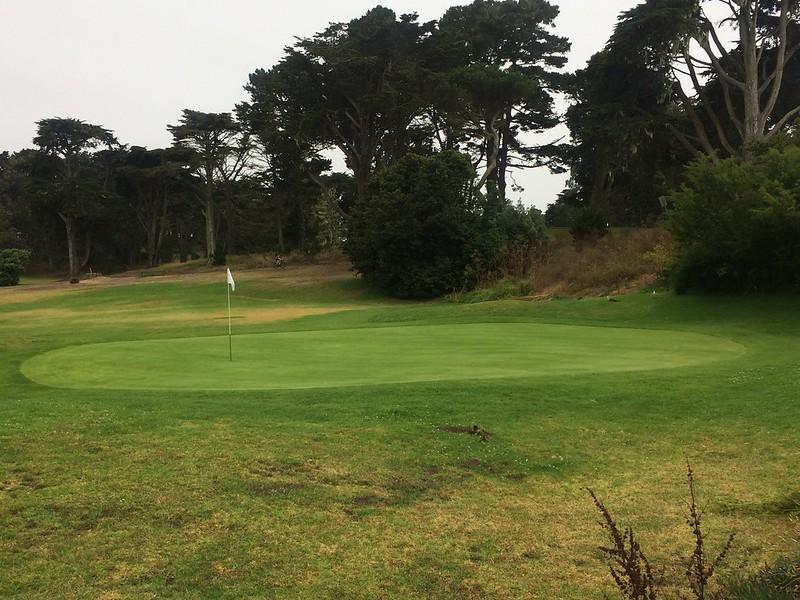
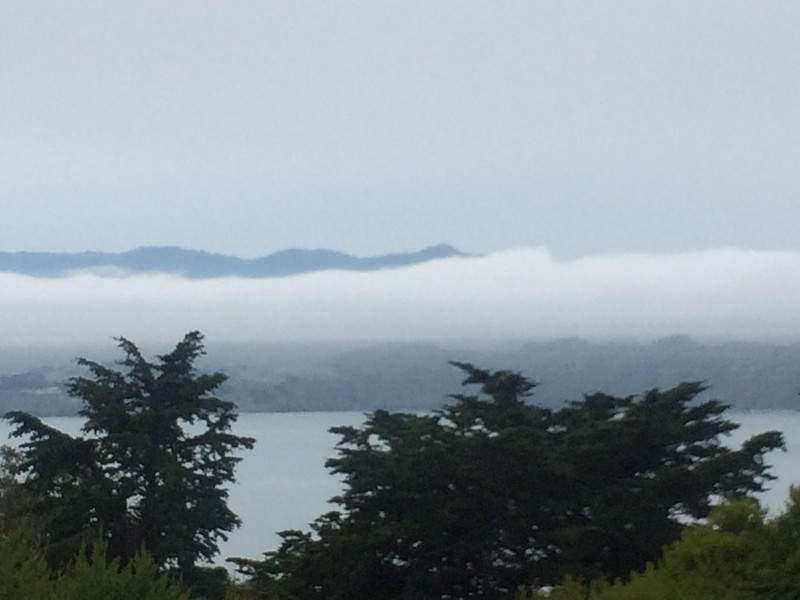
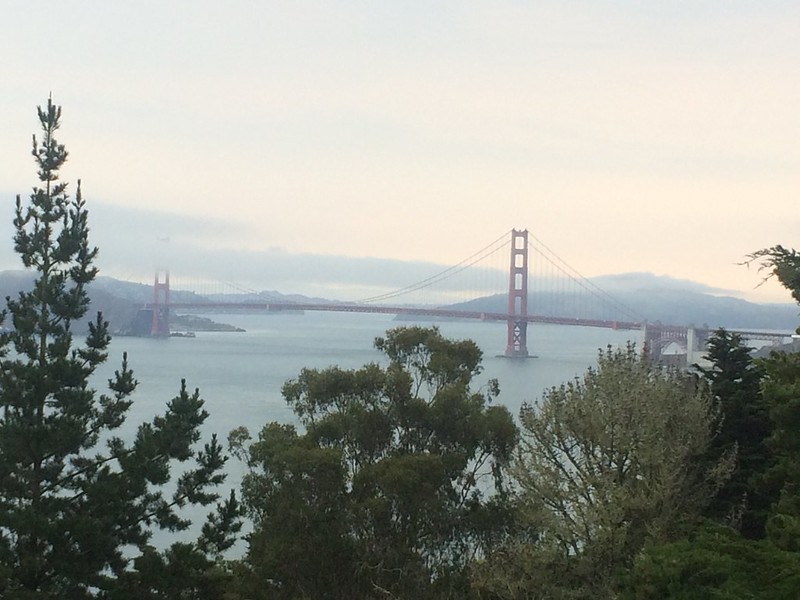

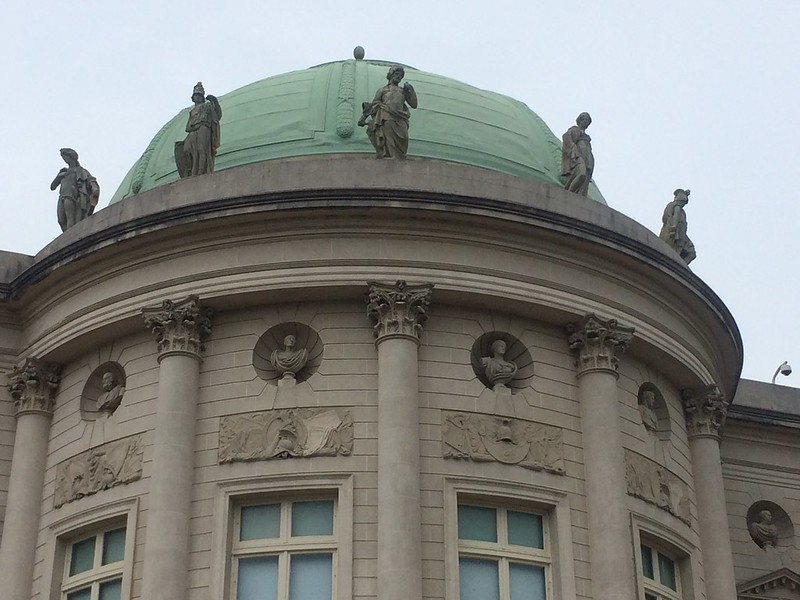
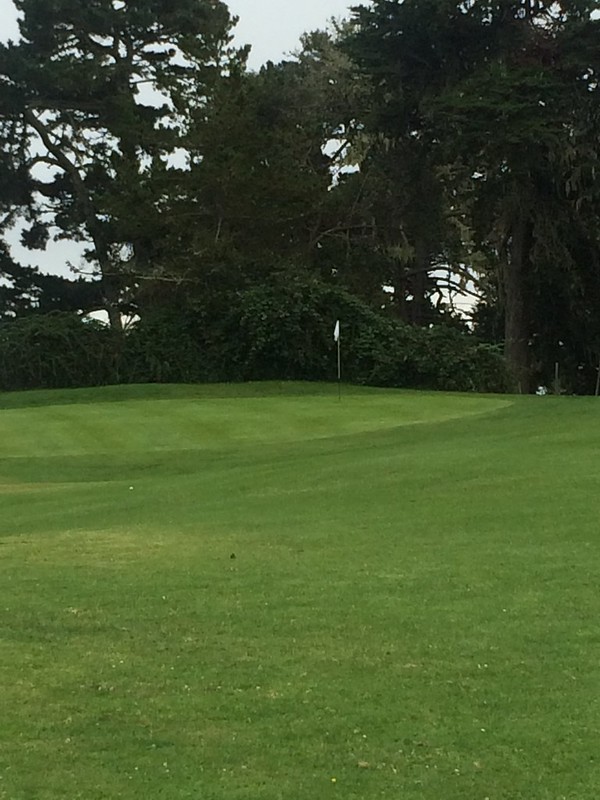
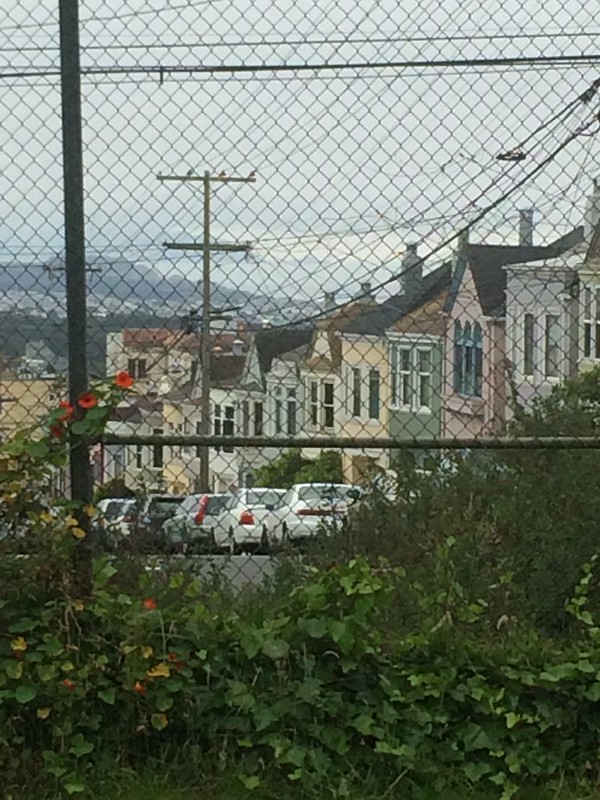
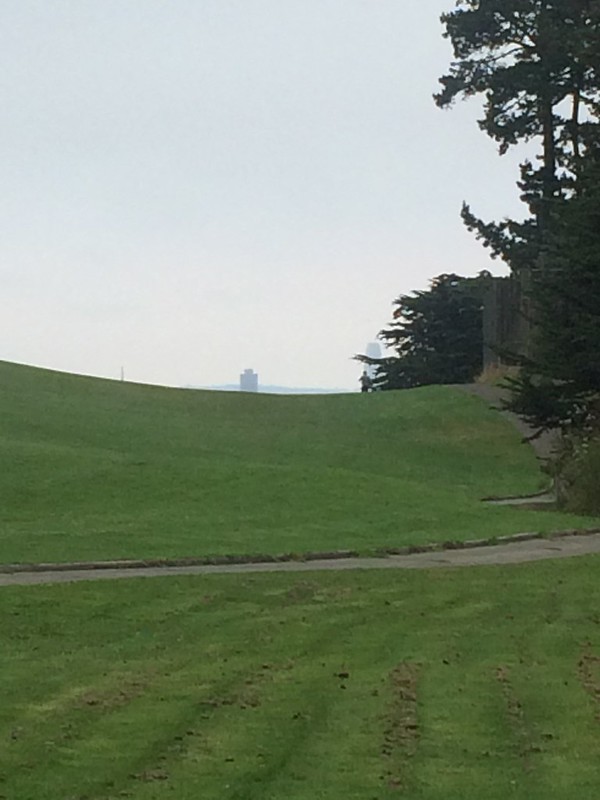
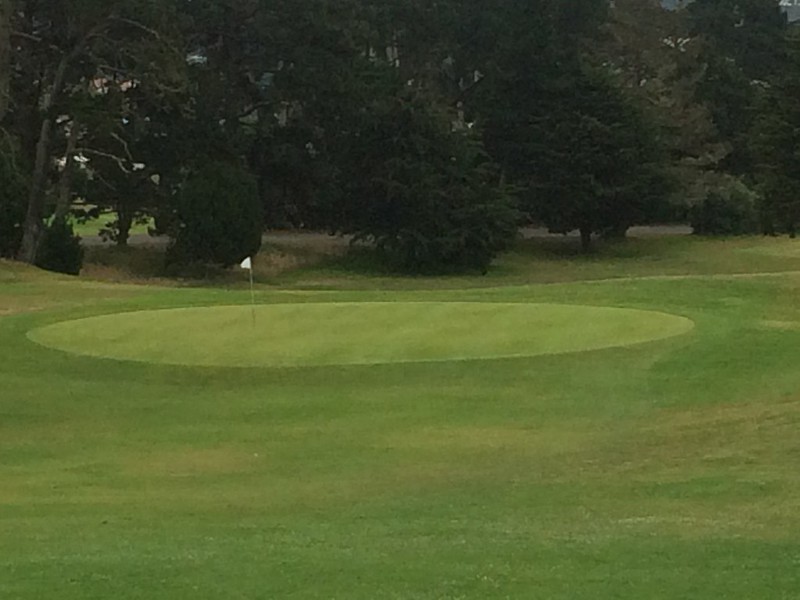
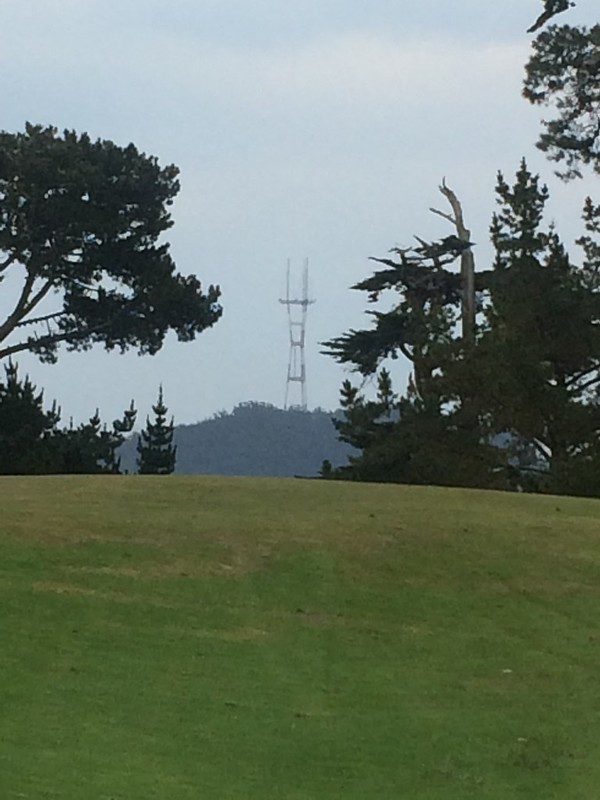


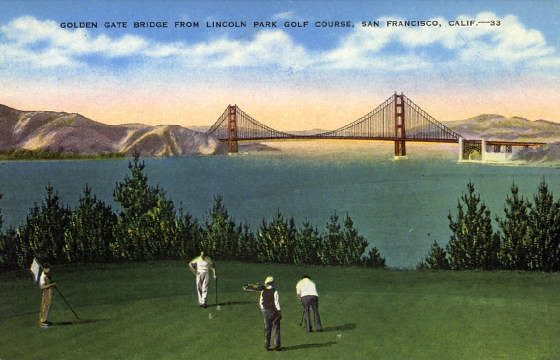
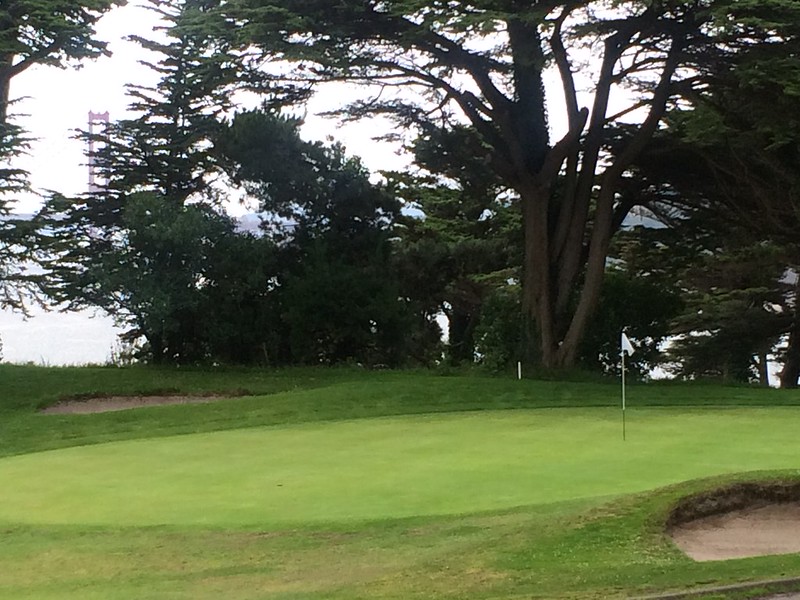
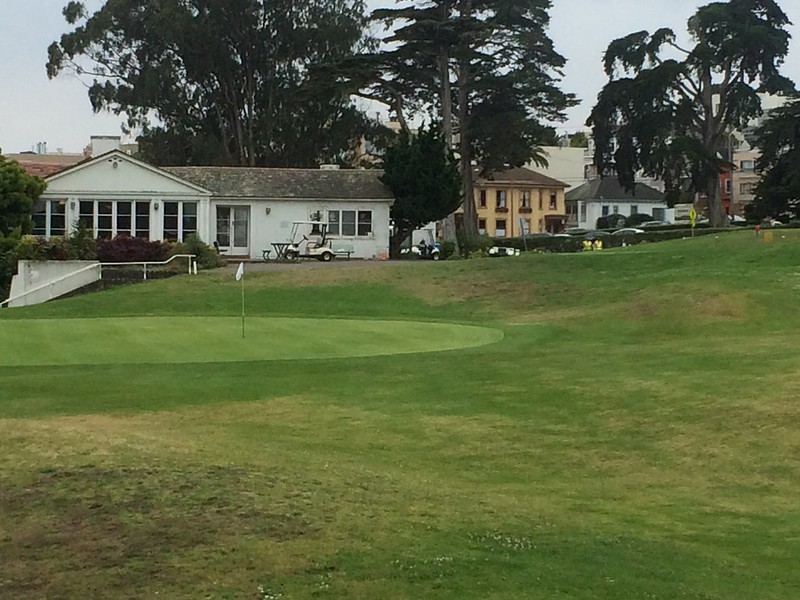
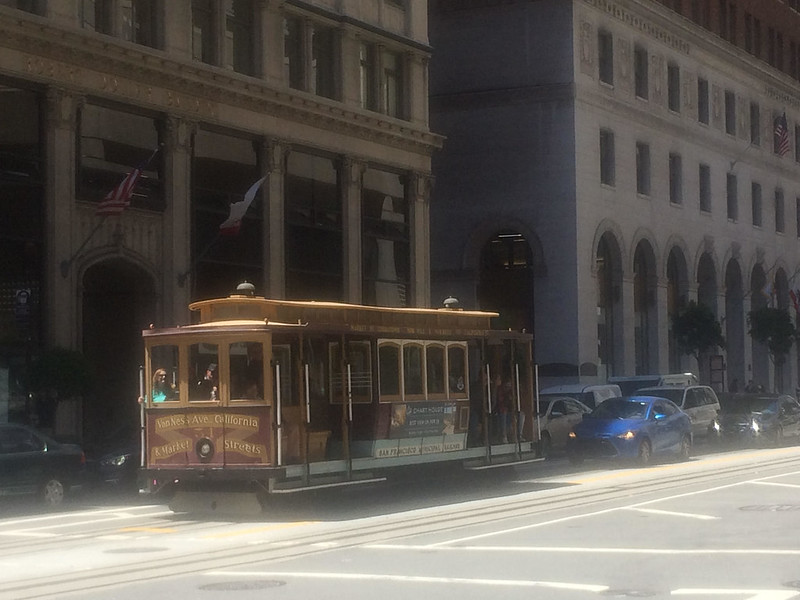




6 comments:
Just a note of thanks here. About 3 years ago my friend and I were inspired by your blog to begin a concerted quest to play our own Top 100 list, in this case the Golf Magazine list from 2013. I played my 70th course yesterday, Muirfield Village, and should be at 73 by year end in advance of a mammoth around the world trip next year which will knock off - I hope - all of the remaining courses not in the U.S..
While it may not be validation, I am struck by how much my perspective on individual courses is consonant with yours. I also suspect that the last course that I get to play will be Augusta National.
Thanks again for the inspiration.
HoyaChris.
Chris - Thanks for the nice comment. You've made excellent progress in 3 years. I liked Muirfield Village, conditioning as good as it get and interesting mix of holes. They treated us very well when I visited. Glad I inspired you. Send me an email with the courses you still need. Good luck on the hardest one of all! John
I"m pretty sure that Lincoln Park was the setting for Bo Links' book entitled "Follow The Wind." Speaking of mystical! BTW, your book just arrived in my mailbox today! I'm enjoying it very much! Best regards!
Thanks for buying the book, glad you're enjoying it!
Have you played Presidio Golf Course next door?
Brian - I have not. Do you recommend it? John
Post a Comment